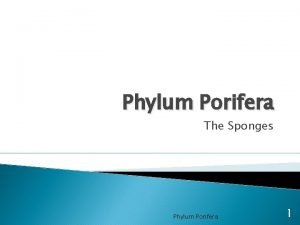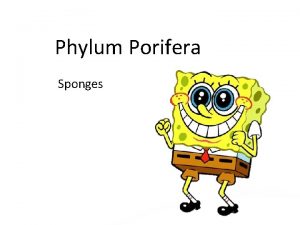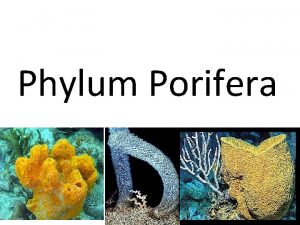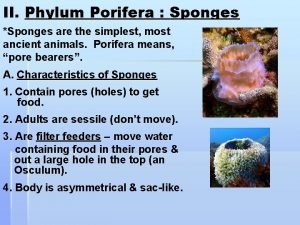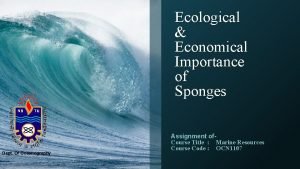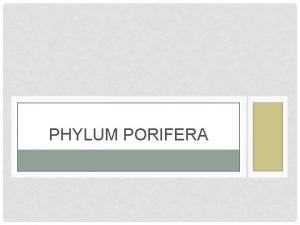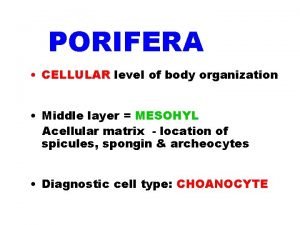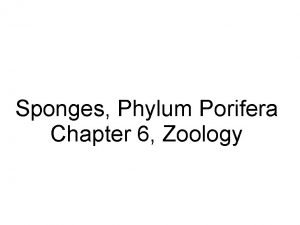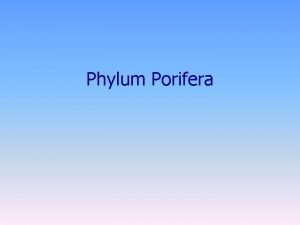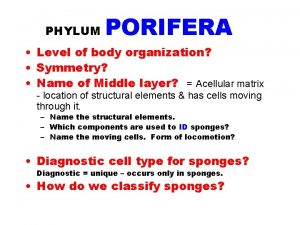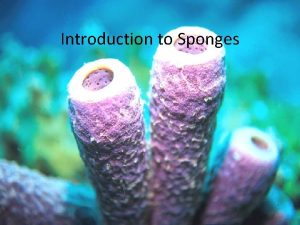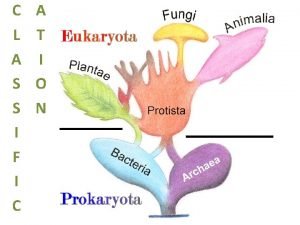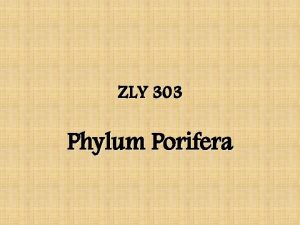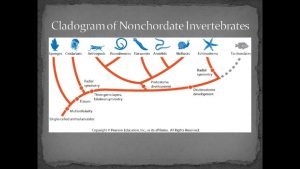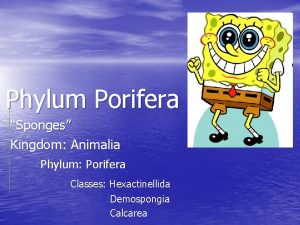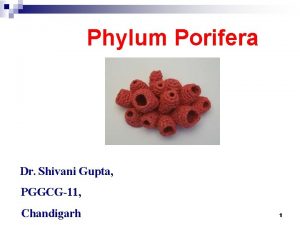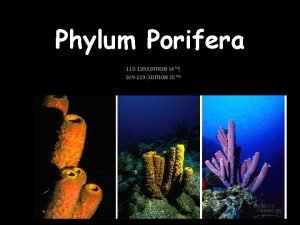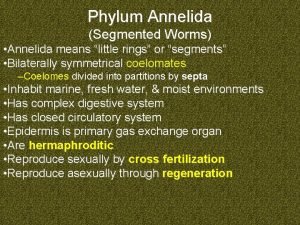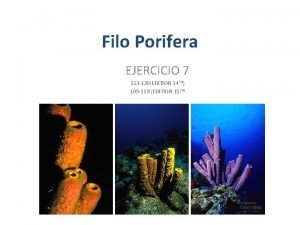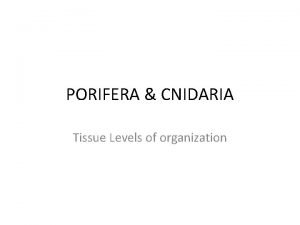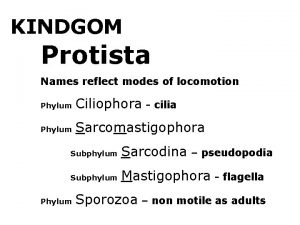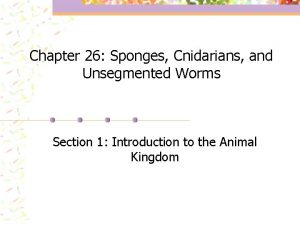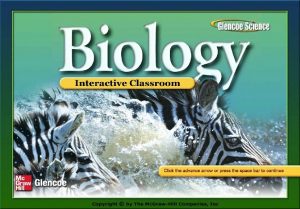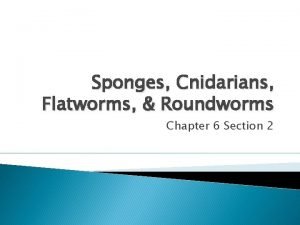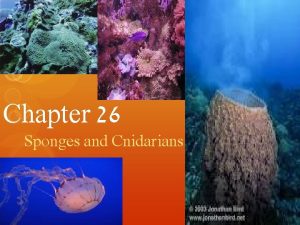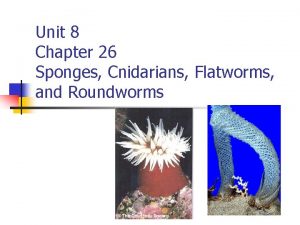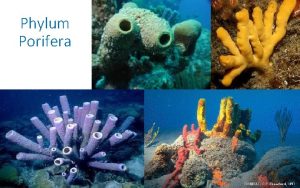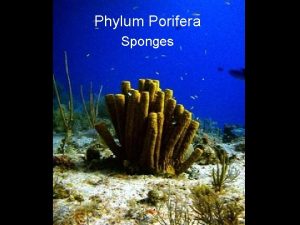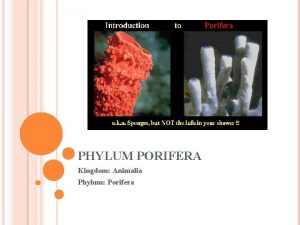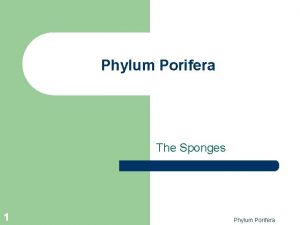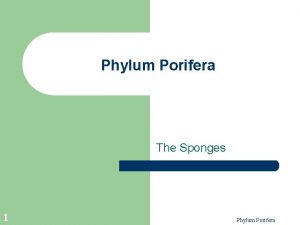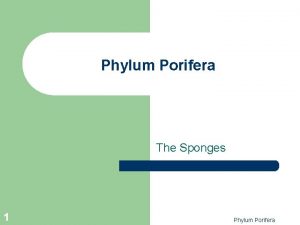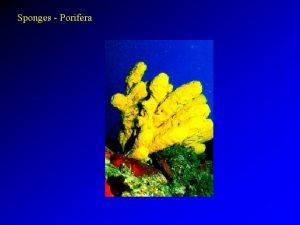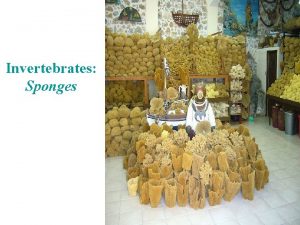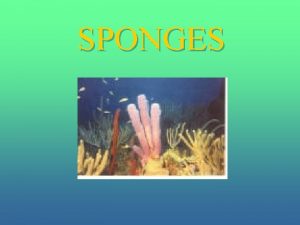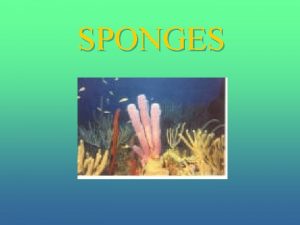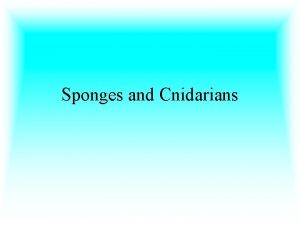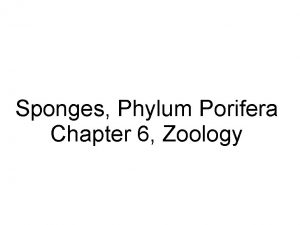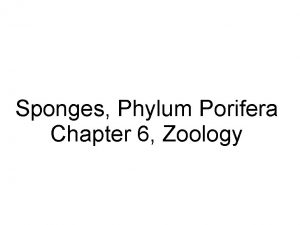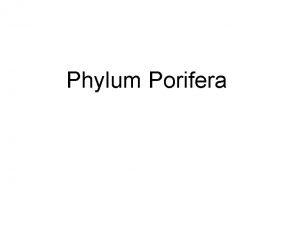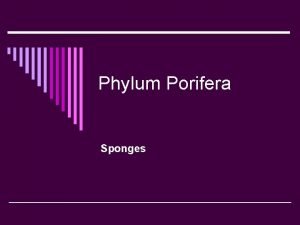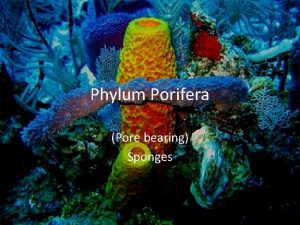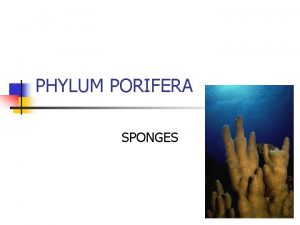Phylum Porifera Sponges Chapter 6 The Sponges Phylum




















































- Slides: 52

Phylum Porifera: Sponges Chapter 6

The Sponges • Phylum Porifera (Latin porous, “pore”; ferre : “to bear”). • About 5, 500 living species most marine although there about 200 freshwater species.


Characteristics of Sponges • Metazoa: without true tissue. Cellular grade of complexity (Parazoa). • Adults asymmetrical or superficially radially symmetrical. • Unique flagellated cells the choanocytes that drive water through canals and chambers: the aquiferous system. • Adults sessile suspension feeders; larval stages are motile. • Reproduction sexual or asexual.


The Poriferan Bauplan • Two unique organizational attributes: – The aquiferous system – Highly totipotent nature of sponge cells

Overview of general structures • Sponges move water through their bodies using choanocytes • All cells are loosely arranged into a gelatinous matrix, the mesohyle • Water enters small holes called ostia • Water exits large holes called oscula • A skeleton helps maintain the structure of the sponge.

Body Structure and the Aquiferous System Dermal pores or ostia The mesohyl includes a non cellular coloidal mesoglea in which are embedded collagen fibers, spicules and various cells. Most of these cells are able to change from one type to another as required. 3) Water flows through the ostia all the chanels and eventually out through the osculum.

Types of Canal Systems • Most sponges can be separated based on their type of canal system. 1. Asconoid 2. Syconoid 3. Leuconoid

Asconoid sponges • Found in radially symmetrical calcarous sponges: rarely exceed 10 cm in height.

Asconoid sponges • Simple organization • Water moves through the ostia into the spongocoel • Choanoderm simple and continuous one cell thick.

Fig. 6. 3 Asconoid condition Choanoderm simple and continuous one cell thick.

Fig. 6. 3 Asconoid water flow 3 Water flow: 1) ostium 2) choanoderm 3) osculum 2 1

#1 #2 #3

Syconoid sponges • Syconoid condition: simple folding of the pinacoderm and choanoderm. • As complexity increases the mesohyl may thicken and appear to have two layers. • Water is brought in through the incurrent canals and then to radial canals (lined with choanocytes).

Fig. 6. 3 Syconoid condition Choanoderm restricted to chambers with an apopyle opening into the atrium.

Fig. 6. 3 Syconoid water flow Water flow: 1) incurent pore 2) incurrent canal 3) prosopyle 4) choanocyte chamber 5) apopyle 6) atrium 6) osculum

Leuconoid sponges • Additional folding of the choanoder and further thickening of the mesohyl. • Water is brought in through incurrent canals, and discharged through excurrent canals. • Most common type.

Fig. 6. 3 Leuconoid condition The atrium is reduced to a series of excurrent canals. Water flow: 1) dermal pore 2) incurrent canal 3) prosopyle 4) choanocyte chamber 5) apopyle 6) excurent canal 7) osculum


• The more complex a sponge condition the more particles it can filter from the water column.

Types of Cells I. III. IV. Pinacocytes (Epidermal Cell) Porocytes (Water Flow Through Cell) Choanocytes (Collar Cells) Archeocytes (Amoebocytes)

I. Pinacocytes • Cells of the external epithelium • Main functions: – Structure – Contraction

II. Porocytes • Cells which form pores • Function: to allow water flow

III. Chanocytes • Line the flagellated canals and chambers. • Main function: to create water flow.

Codosiga


Sponge feeding





Diameter of channels influences water flow velocity. Particles that are captured are in the 2 -5 µm range.

Predatory sponges Cladorhizid carnivorous sponge

The Harp Sponge, Chondrocladia lyra

IV. Archaeocytes • Amoeboid cells which can be non-sessile • Found in cellular matrix • Main function: – Digestion – Secrete structural components • Spongin • Spicules

Sponge feeding

Sclerocyte in the process of secreting a spicule

Keeping the mesohyle together • Spongin • Spines (spicules) – Siliceous – Calcareous

Spongin • Fibers of collagen

Spicules • Spines, when placed together form a very rigid skeleton

Megascleres And Microscleres m M

Main Groups of Sponges • P: Porifera – C: Calcarea – C: Hexactinellida – C: Desmospongiae

Calcarea • Calcareous sponges • Spicules composed of calcium carbonate • Small < 10 cm tall

Calcareous sponges

Hexactinellida • Glass sponges • Some spicules fused to form skeleton • Spicules made of glass (Siliceous spicules) six rayed • Deep water sponges

Siliceous spicules in Hexactinellida (Triaxon) six rayed spicules.


Desmospongiae • Common sponges • Skeleton is variable – Spicules – Spongin – both • Can be large

Siliceous Spiculse in Desmospongia Never six-rayed Microscleres Megascleres

Sclerospongiae Sclerosponges were first proposed as a class of sponges, in 1970 by Hartman and Goreau. Sclerosponges are sponges with a soft body that covers a hard, often massive limestone basal skeleton. Because of their long life span (500 -1, 000 years) it is thought that analysis of these sponges could extend data regarding ocean temperatures, salinity, and other variables farther into the past than has been previously possible. However, it was later found that the sclerosponges are not a monophyletic group (they are polyphyletic) and therefore this class is currently not recognized.

The Big Picture • Sponges are metazoans, but don’t have true tissues • They are an ancient group • Three main groups (taxonomic), which fall into three main structural groups • Four types of specialized cells *choanocyte*
 Struktur tubuh porifera
Struktur tubuh porifera Porocyte function
Porocyte function Sponges body plan
Sponges body plan Ascon sycon and leucon
Ascon sycon and leucon Characteristic of sponge
Characteristic of sponge What is the economic importance of sponges
What is the economic importance of sponges Porifera questions
Porifera questions Cellular organization in porifera
Cellular organization in porifera Poriferans are characterized by presence of
Poriferans are characterized by presence of Characteristic of porifera
Characteristic of porifera Porifera body symmetry
Porifera body symmetry Phylum porifera introduction
Phylum porifera introduction Potassium-argon dating
Potassium-argon dating Canal system in sponges
Canal system in sponges Phylum porifera nervous system
Phylum porifera nervous system Porifera classes
Porifera classes Phylum porifera
Phylum porifera Leucosolenia slide
Leucosolenia slide What phylum means little rings
What phylum means little rings Leucosolenia
Leucosolenia Phylum porifera level of organization
Phylum porifera level of organization Phylum
Phylum Sponges belong to the phylum
Sponges belong to the phylum Chapter 24 section 1 animal characteristics
Chapter 24 section 1 animal characteristics Sponges cnidarians and worms
Sponges cnidarians and worms Chapter 26 sponges and cnidarians answer key
Chapter 26 sponges and cnidarians answer key Sponges
Sponges Hát kết hợp bộ gõ cơ thể
Hát kết hợp bộ gõ cơ thể Frameset trong html5
Frameset trong html5 Bổ thể
Bổ thể Tỉ lệ cơ thể trẻ em
Tỉ lệ cơ thể trẻ em Voi kéo gỗ như thế nào
Voi kéo gỗ như thế nào Chụp phim tư thế worms-breton
Chụp phim tư thế worms-breton Hát lên người ơi
Hát lên người ơi Kể tên các môn thể thao
Kể tên các môn thể thao Thế nào là hệ số cao nhất
Thế nào là hệ số cao nhất Các châu lục và đại dương trên thế giới
Các châu lục và đại dương trên thế giới Công thức tính thế năng
Công thức tính thế năng Trời xanh đây là của chúng ta thể thơ
Trời xanh đây là của chúng ta thể thơ Mật thư tọa độ 5x5
Mật thư tọa độ 5x5 101012 bằng
101012 bằng Phản ứng thế ankan
Phản ứng thế ankan Các châu lục và đại dương trên thế giới
Các châu lục và đại dương trên thế giới Thơ thất ngôn tứ tuyệt đường luật
Thơ thất ngôn tứ tuyệt đường luật Quá trình desamine hóa có thể tạo ra
Quá trình desamine hóa có thể tạo ra Một số thể thơ truyền thống
Một số thể thơ truyền thống Cái miệng nó xinh thế
Cái miệng nó xinh thế Vẽ hình chiếu vuông góc của vật thể sau
Vẽ hình chiếu vuông góc của vật thể sau Thế nào là sự mỏi cơ
Thế nào là sự mỏi cơ đặc điểm cơ thể của người tối cổ
đặc điểm cơ thể của người tối cổ V cc
V cc Vẽ hình chiếu đứng bằng cạnh của vật thể
Vẽ hình chiếu đứng bằng cạnh của vật thể Vẽ hình chiếu vuông góc của vật thể sau
Vẽ hình chiếu vuông góc của vật thể sau
